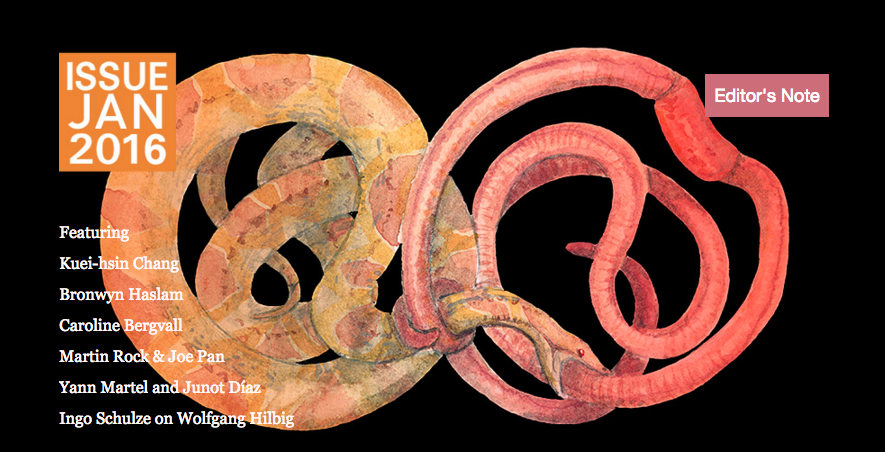It’s that quarterly, magical time of year again, guys: Asymptote is loud and proud with a stellar January issue. And this is not just any issue—it’s our fifth anniversary issue, “Eternal Return,” and that means Asymptote is practically old enough to head off to kindergarten and start finger-painting and writing poetry (after winning an award a the London Book Fair and becoming a member of the Guardian books network, of course).
It couldn’t be more fitting, then, that this issue features some of our most inventive, thrilling work to date: interviews with Yann Martel and Junot Díaz, a really, really cool experimental translation feature, work and an interview with Caroline Bergvall, and writing from authors that will be sure to capture your literary imagination—like Olga Tocarczuk, who was featured on the blog in a gripping essay by her translator Jennifer Croft—or this fascinating anonymous story called “The Legend of the Dakini Ray of Sunlight (White Tārā),” handily translated from the Mongolian by Ottilie Mulzet. Really, you can’t go wrong, but we can still try to point you toward our favorite issue picks this time around: READ MORE…


